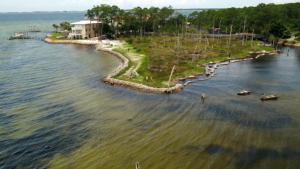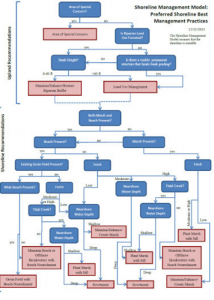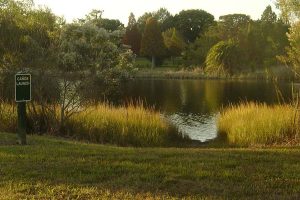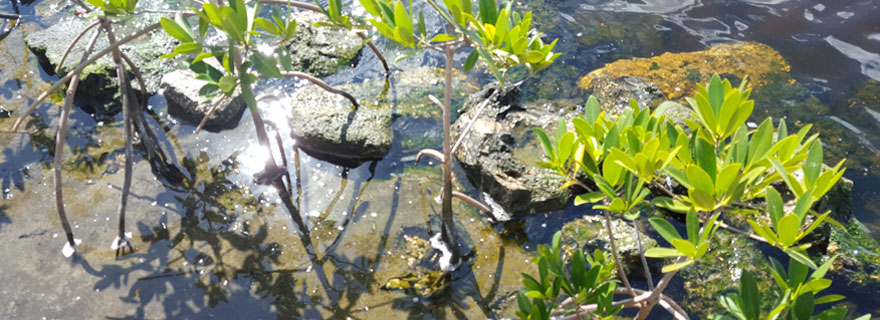
Living shorelines, an eco-friendly alternative to seawalls, use a strategic combination of plants, stones, sand and offshore structures or oyster beds to reduce wave energy and prevent erosion. Ongoing research shows that they function as highly productive habitat and provide as much — if not more — protection than seawalls.
The challenge is matching the best choices for each site. Not every site is suitable for a living shoreline and some sites require elements beyond plants and stones to effectively protect shorelines from erosion.
 A living shoreline online tool first developed by the Virginia Institute of Technology has been modified for Tampa Bay by the Florida Wildlife Research Institute.
A living shoreline online tool first developed by the Virginia Institute of Technology has been modified for Tampa Bay by the Florida Wildlife Research Institute.
The Tampa Bay Living Shorelines Suitability Model includes an easy-to-follow decision tree that details the multiple issues involved in site selection and shoreline design. “The original model from Virginia had just five categories, this has 16,” said Christopher Boland, GIS specialist with the Florida Fish and Wildlife Research Institute.
The categories represent the variables that impact the design of a living shoreline in a question-and-answer format. For instance, if your waterfront property is currently unprotected by a man-made structure, you’ll also need to know if it’s bordered by sand, marsh or mangroves, if there are seagrass beds close to shore and how far a wave could travel before it hits land.
Canals Pose Challenge
The largest single category for Tampa Bay’s shoreline – nearly 34% — is canals constructed as part of dredge-and-fill projects built prior to the 1970s, Boland said. “Those highly modified areas would be difficult to change because they’re part of narrow waterways that boats need to be able to get through.” Even within those constraints, however, canal-front seawalls can be updated to accommodate habitat and increase their longevity, he said.
An online mapping function allows residents to type in their address for information about their property as a simple first step in determining if the site is suitable for a living shoreline.
Different parts of the project were funded through the RESTORE Act associated with the Deepwater Horizon oil spill and, the final version was funded through the Tampa Bay Environmental Restoration Fund. As larger parcels of property are developed or restored, habitat created on a smaller scale becomes more important. For the first time ever, living shorelines are included in both Tampa Bay Estuary Program’s Comprehensive Conservation and Management Plan and its Habitat Master Plan.
 Federal and state governments also have recognized the importance of living shorelines, including the Florida Department of Environmental Regulation and the Army Corps of Engineers. “Both have revamped their permitting processes to make installing a living shoreline as easy as replacing a seawall,” said Tom Ries, who has worked on living shorelines across the region.
Federal and state governments also have recognized the importance of living shorelines, including the Florida Department of Environmental Regulation and the Army Corps of Engineers. “Both have revamped their permitting processes to make installing a living shoreline as easy as replacing a seawall,” said Tom Ries, who has worked on living shorelines across the region.
And several other environmental organizations have built website focusing on how – and why – to build living shorelines:
- Multiple partners have contributed to information for hands-on guide to building living shorelines in Florida
- Restore America’s Estuaries hosts a “Community of Practice” for living shorelines pages (including a video) on living shorelines:
- The Florida Department of Environmental Protection has several showcase projects in the Panhandle:
- The National Oceanic and Atmospheric Administration has a page on living shoreline education through the following sites:
- The Southern Environmental Law Center’s page on living shorelines includes a national forum.
